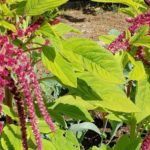Thanksgiving. A day set aside for gratitude. A tradition represented by an abundance of food. A holiday from work and school spent with friends and family. I remember the first Thanksgiving feast I ever hosted about 35 years ago. I stuffed a turkey with my grandmother’s sage stuffing recipe and served it to my boyfriend and his family. I was pretty proud of my turkey. Thankfully, the dinner was a success. Last year, we shared this American feast-tradition with our Australian extended family. The turkey and fixings were gobbled up! This year, we celebrate Thanksgiving in the midst of a surging pandemic where social isolation is required and when food insecurity rates have doubled (11.1% pre-pandemic to 23% by 5/19/20).1,2
Finding a little “normalcy” during a Fall surge in pandemic cases that have caused social chaos and added restrictions might be a comforting coping tool. Participating in Thanksgiving traditions may be just the ticket.
The turkey feast tradition typically includes a pumpkin pie dessert. How do you make a Thanksgiving pumpkin pie? Does it start with a can of pumpkin? This is squash season, and what better time to make this Thanksgiving tradition from scratch! I have found that the best pumpkin pie is not from the traditional carving pumpkin, but from a butternut squash. These gourds have an orange meat rich in carotenoids, polyphenols, and antioxidants.3,4
The butternut squash is best picked from the vine when the flesh is a tan color, and the stem has a withered brown appearance. The more mature the fruit, the more carotenoids it will contain.4 To prepare the squash, cut it in half lengthwise and scoop out the seeds, brush the cut side with oil, and bake face down in the oven. Butternut squash may not have as many seeds as other squash varieties, but don’t throw out the seeds! Save them for roasting! The squash seeds contain anti-oxidant and anti-bacterial properties, and may have positive effects on blood glucose and blood pressure.3,5 The seeds are also high in protein,5 especially tryptophan.6
Tryptophan is often thought responsible for the sleepiness frequently experienced after the Thanksgiving feast is finished. In fact, the turkey often takes the blame for this phenomenon. Tryptophan is an amino acid and amino acids make up proteins. Nine amino acids are essential, which means they must come from the diet. Tryptophan is one of those essential amino acids. Tryptophan has several functions beyond helping the body build proteins. It also helps synthesize vitamin B3 and serotonin, and serotonin is involved in producing melatonin.7-11 While only a small portion of tryptophan is used for serotonin/melatonin synthesis,9,10 it is an important function because serotonin is involved in mood regulation (among other important activities) and melatonin is involved in the sleep-wake cycle and circadian rhythm.10-12
Well, that explains it! Turkey has tryptophan, which makes serotonin and melatonin, so we get relaxed and sleepy! Well, it isn’t so simple…
First the tryptophan has to get to the brain in order to make us sleepy. While most tryptophan (75-95%) circulates in the blood bound to albumin, the rest circulates in “free” form.10 Free tryptophan is able to cross the blood-brain barrier by hitching a ride on a transport protein. It isn’t easy to hitch the ride, however, since other amino acids (leucine, isoleucine, valine, phenylalanine, tyrosine) also compete for a ride on the same transport protein and the seating is limited.9,10,13
The albumin which is bound to tryptophan has tryptophan’s best interest at heart, though. While it has an affinity for tryptophan, it has less affinity than the blood-brain transport protein and readily releases tryptophan so it can hitch up with the transporter. Not only does albumin avoid clinging to tryptophan on its journey to the brain, it also protects tryptophan from insulin’s anabolic recruitment efforts.13 While insulin is busy recruiting amino acids from the blood stream to build the body’s proteins, tryptophan’s competition for the transport-train to the brain is reduced. Tryptophan is therefore more likely to hitch a ride when insulin gets involved.6,10,11,13,14
There are some dietary factors that may encourage tryptophan’s ability to cause sleepiness. Since insulin will reduce tryptophan’s competition for a seat on the blood-brain-transport-train, a meal that is rich in carbohydrates and calories may give tryptophan the edge it needs to get to the brain.10,11 On the other hand, if the diet is high in protein, lots of amino acids will be available to rush the transporter hoping for a ride across the blood-brain barrier.6,14
A diet sufficient in vitamin B3 may also aid tryptophan’s chances of getting to the brain. In addition to protein, serotonin, and melatonin synthesis, tryptophan also synthesizes vitamin B3 (niacin).6-8 Vitamin B3 is widely found in foods, though not as bioavailable in grain products. While a lot of tryptophan is typically devoted to this function,6,10,15 a diet sufficient in vitamin B3 will allow tryptophan to devote more attention to its other functions.6
Foods which contain higher levels of tryptophan compared to other amino acids may also lend an edge to tryptophan’s chances of getting to the brain by increasing the tryptophan-amino acid ratio. The more tryptophan, the higher the ratio. The more of the other amino acids, the lower the ratio. While turkey (and other animal food) does provide a lot of tryptophan, many plant foods also contain tryptophan, albeit less tryptophan compared to turkey. However, the tryptophan-amino acid ratio of some plant foods may be similar or even greater than turkey. Milk stands out among tryptophan foods, though, providing an abundance of tryptophan as well as a much higher tryptophan to amino acid ratio compared to turkey.10 Milk trumps turkey for giving tryptophan a brain-transport advantage.
Whether your Thanksgiving tradition ends in a “sleepy,” lazy feeling after loosening the belt a notch, or whether your tradition begins with a sweaty workout and ends in a vegan feast, may you find the pandemic coping benefit of “normalcy” as you practice your own Thanksgiving traditions this year. And remember the common theme that binds each unique Thanksgiving practice: Gratitude. May we make gratitude the norm.
Grateful for the seasons, for the earth that supports life, for food on the table, and for the essential work force which provides food and heals the sick. Grateful for community.
Grateful.
Sources
[1] Schanzenbach, D. W., & A. Pitts. (2020). How much has food insecurity risen? Evidence from the Census Household Pulse Survey. Institute for Policy Research Rapid Research Report. Retrieved from https://www.ipr.northwestern.edu/documents/reports/ipr-rapid-research-reports-pulse-hh-data-10-june-2020.pdf
[2]USDA. (2020). Food Security and Nutrition Assistance. October 16. Retrieved from https://www.ers.usda.gov/data-products/ag-and-food-statistics-charting-the-essentials/food-security-and-nutrition-assistance/
[3] Li, H. (2020). Evaluation of bioactivity of butternut squash (cucurbita moschata D.) seeds and skin. Food Science & Nutrition. 8:3252-3261.
[4] Zaccari, F. & Galietta, G. (2015). α-Carotene and β-Carotene Content in Raw and Cooked Pulp of Three Mature Stage Winter Squash “Type Butternut”. Foods. 4(3): 477–486. doi:10.3390/foods4030477
[5] Dash, P. & Ghosh, G. (2018). Amino acid profiling and antimicrobial activity of Cucurbita moschata and Lagenaria siceraria seed protein hydrolysates. Natural Product Research. 32(17):2050-2053. doi:10.1080/14786419.2017.1359174
[6] Hudson, C, Hudson, S.P., Hecht, T., & Mackenzie, J. (2005). Protein source tryptophan versus pharmaceutical grade tryptophan as an efficacious treatment for chronic insomnia. Nutritional Neuroscience. 8(2): 121–127. DOI: 10.1080/10284150500069561
[7] Friedman, M. (2018). Analysis, nutrition, and health benefits of tryptophan. Int J Tryptophan Res. 1: 1178646918802282. doi: 10.1177/1178646918802282
[8]Comai, S., Bertazzo, A., Bailoni, L., Zancato, M., Costa, C.V.L., & Allegri, G. (2007). Protein and non-protein (free and protein-bound) tryptophan in legume seeds. Food Chemistry. 103:657–661. doi:10.1016/j.foodchem.2006.07.045
[9] Layman, D.K., Lonnerdal, B., & Fernstrom, J.D. (2018). Applications for α-lactalbumin in human nutrition. Nutrition Reviews. 76(6): 444–460. doi: 10.1093/nutrit/nuy004
[10] Richard, D.M., Dawes, M.A., Mathias, C.W., Acheson, A., Hill-Kapturczak, N., & Dougherty, D.M. (2009). L-Tryptophan: Basic metabolic functions, behavioral research, and therapeutic indications. Int J Tryptophan Res. 2:45-60. doi: 10.4137/ijtr.s2129
[11] Gostner, J.M., Geisler, S., Stonig, M., Mair, L, Sperner-Unterweger B., & Fuchs D. (2020). Tryptophan Metabolism and Related Pathways in Psychoneuroimmunology: The Impact of Nutrition and Lifestyle. Neuropsychobiology. 79:89–99. doi:10.1159/000496293
[12]Sleep Foundation. (2020). Melatonin and Sleep. Aug 6. Retrieved from https://www.sleepfoundation.org/articles/melatonin-and-sleep
[13] van Donkelaar. E.L., Blokland, A., Ferrington, L., Kelly, P., Steinbusch, H.W.M., & Prickaerts, J. (2011). Mechanism of acute tryptophan depletion: is it only serotonin? Molecular Psychiatry. 16:695–713.
[14] Wurtman, R.J., Wurtman, J.J., Regan, M.M., McDermott J.M., Tsay, R.H., & Breu, J.J. (2003). Effects of normal meals rich in carbohydrates or proteins on plasma tryptophan and tyrosine ratios. Am J Clin Nutr. 77:128–32.
[15] Oregon State University, Linus Pauling Institute. (n.d.). Niacin. Retrieved from https://lpi.oregonstate.edu/mic/vitamins/niacin#metabolism
Last Updated 11/5/20


